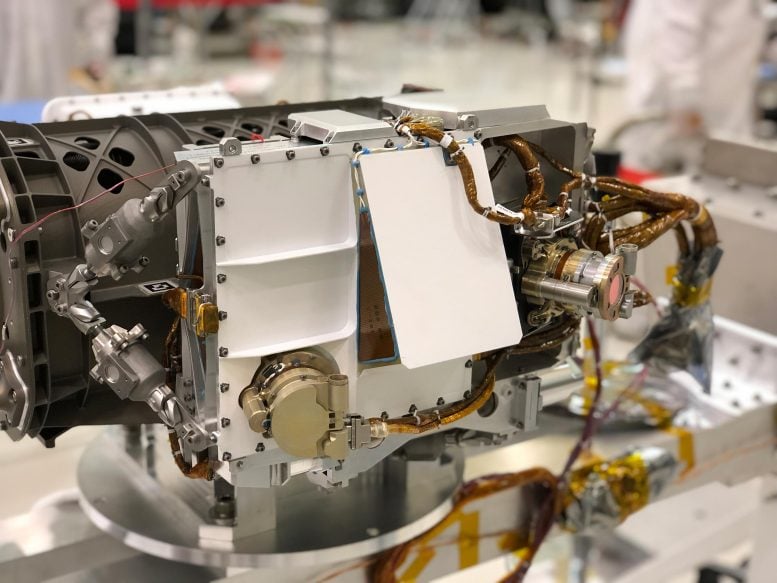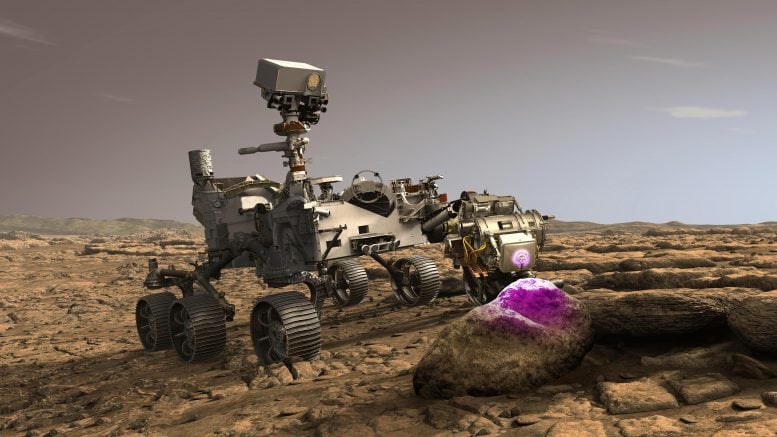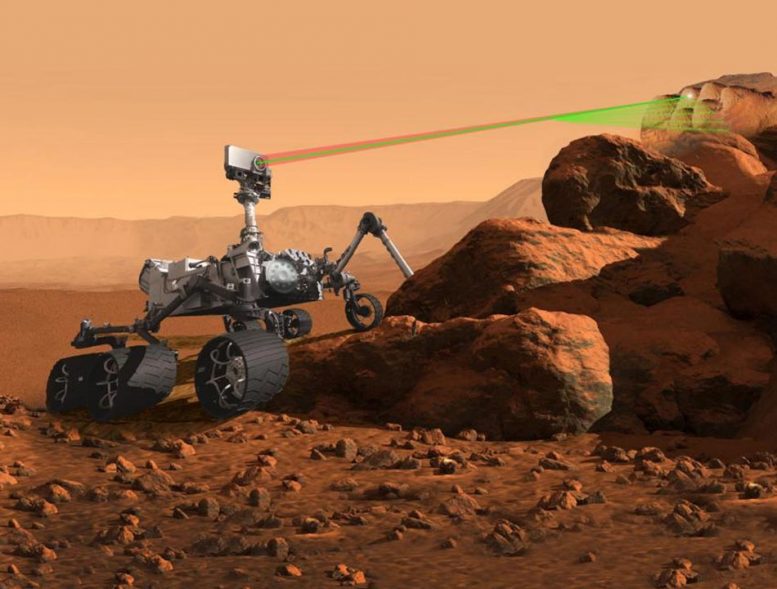NASA's Perseverance rover uses its robotic arm to work around a rocky outcrop called “Skinner Ridge” in a set of images captured in June and July 2022 by the rover's Mastcam-Z camera system. The SHERLOC is mounted on the end of the arm. Image source: NASA/JPL-Caltech/MSSS
Engineers install a dust cover on one of the scientific instruments' cameras.
Data and images from NASAperseverance Mars The rover indicates that one of the two covers that prevent dust from accumulating on the SHERLOC optics remains partially open. In this situation, the envelope interferes with scientific data collection operations. SHERLOC (Scanning Habitable Environments using Raman and Luminescence for Organic and Chemical Materials) on the rover's robotic arm uses cameras, a spectrometer and a laser to look for organic compounds and minerals that have been altered in aquatic environments and may be signs of the past. Microbial life.
The mission determined on January 6 that the flap was oriented in a position where certain operating modes could not operate successfully. An engineering team investigates to determine the root cause and possible solutions. Recently, the lid was partially opened. To better understand the behavior of the cap motor, the team sent commands to the device to change the amount of power being fed to it.

CLOSE-UP SHOT OF SHERLOC: This close-up view of the SHERLOC instrument at the end of the robotic arm on NASA's Perseverance rover was taken before the rover's launch to Mars. Image source: NASA/JPL-Caltech
With the cover in its current position, the device cannot use the laser on rock targets, nor can it collect spectroscopy data. However, imaging microscopy can still be obtained using WATSON, a color camera on SHERLOC used to take close-up images of rock grains and surface textures. WATSON (Wide Angle Topographic Sensor for Electronic Processing and Engineering) operates through a different aperture.
SHERLOC is part of a group of seven Perseverance instruments. During mission development, the team designed the instrument suite so that the rover could still achieve its science goals in the event of any single instrument failure, as there is some overlap between the capabilities of the instruments. Besides SHERLOC, PIXL (Planetary Instrument for X-ray Lithochemistry) and SuperCam also perform spectroscopy.

The Perseverance PIXL rover in action on Mars (illustration): In this illustration, NASA's Perseverance Mars rover uses the Planetary X-ray Lithochemistry (PIXL) instrument. An X-ray spectrometer, located on the turret at the end of the rover's robotic arm, will help look for signs of ancient microbial life in rocks. Image source: NASA/JPL-Caltech.
The rover is currently headed to explore a region called Beehive Geyser, and celebrated its 1,000th Martian day on the Red Planet on December 12, 2023 — more than 300 Martians after its initial mission. Since the rover's landing on February 18, 2021, SHERLOC has scanned and provided rich data on 34 rocky targets, creating a total of 261 spectroscopic maps of those targets. Featuring A Radioisotope energy systemThe Perseverance design is based on the agency's Curiosity Mars rover, which is still going strong after more than 11 years (4,000 Martian days) on the red planet.

Illustration of the Mars Perseverance Rover using its SuperCam instrument to hit a rock with a laser in order to test what it is made of. Credit: NASA
More about the mission
The main goal of the Perseverance Mars mission is astrobiology, including the search for signs of ancient microbial life. The rover will determine the planet's geology and past climate, pave the way for human exploration of the Red Planet, and will be the first mission to collect and store Martian rocks and regolith.
Subsequent NASA missions, in cooperation with the European Space Agency (ESA)European Space Agency), a spacecraft will be sent to Mars to collect these sealed samples from the surface and return them to Earth for in-depth analysis.
The Mars 2020 Perseverance mission is part of NASA's Moon to Mars exploration approach, which includes Artemis missions to the Moon that will help prepare for human exploration of the Red Planet.
Jet Propulsion Laboratoryoperated for NASA by the California Institute of Technology in Pasadena, California, built and manages operations of the Perseverance rover.

“Infuriatingly humble alcohol fanatic. Unapologetic beer practitioner. Analyst.”
